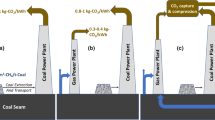Abstract
In many parts of the world, mine production and expansion are increasingly limited by access to water. One solution is to consider a water market that would allow trading of mine site water (worked water) from wetter mines to drier mines. However, there is currently no policy support for such a market and it is likely that without government support via incentives, mines will continue to favour freshwater use because it is relatively inexpensive. Furthermore, mines have a high capacity to pay for the water they use, and freshwater creates few risks for production. The opportunity provided by water savings within a trading scheme could be viewed as a source of money to provide incentives for the transfer of worked water between mines. In this paper, we present a new method to trade water among mines based on a site water balance assessment utilising historical climate data, and apply this method to a demonstration region containing multiple coal mines. On average, 340 ML could be transferred per year to drier mines but there remains 11,440 ML per year of water demand unable to be met by trading. The direct monetary value of the worked water that could be transferred, derived from additional coal mining, would be significant. Irrigation may be an attractive option if available infrastructure can be used to trade the saved fresh water in existing markets, thereby providing indirect monetary value (i.e. external to coal production). Alternative uses of water savings may have considerable additional non-monetary value that directly affects the mining industry’s social license-to-operate and its security of long term water supply.



Similar content being viewed by others
References
ACIL Tasman (2007) Water reform and industry: implications of recent water initiatives for the minerals, petroleum, energy, pulp and paper industries. Report prepared for the Australian Government Department of Industry, Tourism and Resources, 182 pp
Barrett DJ (2009) Thinking outside the lease—towards a strategic view of regional water management by the mining industry. Proc, Water in Mining 2009, Australasian Inst of Mining and Metallurgy, Publ #10/2009, Perth, Australia, pp 145–153
Bonan GB (2008) Forests and climate change: forcings, feedbacks and the climate benefits of forests. Science 320:1444–1449
Cote C, Moran CJ, Hedemann C, Davis H, Silvester N, Koch C, Tollari C (2006) Systems modeling for water management in mining and minerals—Bowen Basin coal. Proc, Water in Mining 2006, Australasian Inst of Mining and Metallurgy, Publ #10/2006, Brisbane, Australia, pp 215–223
Diaz-Balteiro L, Romero C (2008) Valuation of environmental goods: a shadow value perspective. Ecol Econ 64:517–520
Evans R, Moran CJ, Brereton D (2006) Beyond NPV—A review of valuation methodologies and their applicability to water in mining. Proc, Water in Mining 2006, Australasian Inst of Mining and Metallurgy, Publ #10/2006, Brisbane, Australia, pp 97–103
Gunther P, Mey W, van Niekerk AM (2006) A sustainable mine water treatment initiative to provide potable water for a South African city—a public-private partnership. Proc, Water in Mining 2006, Australasian Inst of Mining and Metallurgy, Publ #10/2006, Brisbane, Australia, pp 189–198
Moran CJ (2006) Linking the value of water to sustainability. Proc, Water in Mining 2006, Australasian Inst of Mining and Metallurgy, Publ #10/2006, Brisbane, Australia, pp 113–121
Moran CJ, Cote CM, Macintosh J (2006) Northern Bowen Basin water and salt management practices. Final Report to the Australian Coal Assoc Research Program, project C15001, available at: http://www.acarp.com.au/abstracts.aspx?repId=C15001, 133 pp
Moran CJ, Ringwood K, Evans R, Silvester N (2008) Characterising the values of water in minerals operations. Proc, International Congr on Water Management in the Mining Industry, Santiago, Chile, pp 3–15
Moran CJ, Barrett DJ, Cote CM (2009) A statistical analytical method to assess the potential for worked water sharing between mines. Proc, International Mine Water Conf, Pretoria, South Africa. ISBN Number: 978-0-9802623-5-3, pp 256–260
Yang H, Wang L, Abbaspour KC, Zehnder AJB (2006) Virtual water trade: an assessment of water use efficiency in the international food trade. Hydrol Earth Syst Sci 10:443–454
Younger PL (2006) The water footprint of mining operations in space and time—A new paradigm for sustainability assessments? Proc, Water in Mining 2006, Australasian Inst of Mining and Metallurgy, Publ #10/2006, Brisbane, Australia, pp 13–21
Acknowledgments
The content of this paper was first presented at the International Mine Water Conference, 19–23 October 2009, Pretoria, South Africa. We thank Emma Yabsley for undertaking the water redistribution analysis on a University of Queensland research vacation scholarship. We are also grateful to companies operating in the demonstration region for access to site water data.
Author information
Authors and Affiliations
Corresponding author
Rights and permissions
About this article
Cite this article
Barrett, D., Moran, C. & Cote, C. A Method for Estimating the Potential Trading of Worked Water among Multiple Mines. Mine Water Environ 29, 92–98 (2010). https://doi.org/10.1007/s10230-010-0110-8
Received:
Accepted:
Published:
Issue Date:
DOI: https://doi.org/10.1007/s10230-010-0110-8




